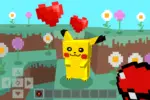Imagine making thousands, even millions, of dollars just by recording your daily life and sharing it with the internet. Everyday activities, such as making dinner or having coffee with a friend, could suddenly become part of your job. You could work from home and on your own schedule, without strict corporate deadlines or a pesky boss. Sounds like a dream, right? That’s the reality for successful vloggers on YouTube.
For anyone who doesn’t know, a vlog is a video blog, and it can contain basically any type of content. One vlog may be a stay-at-home mom’s morning routine, while another may be a day in the life of a Harvard medical student. There are thousands of YouTube vloggers, many of whom have well over a million subscribers. Some YouTube channels are specifically dedicated to vlogging, while others have a different focus and only throw in vlogs occasionally. In either case, these videos have the potential to bring in huge sums of money.
Within the vlogging community, there is a subcategory of family vloggers. These channels typically center their videos around family activities and heavily feature young children. Examples of highly successful family vlogging channels include “The ACE Family,” “Eh Bee Family,” “The Atwoods” and many more.
For the most part, family vloggers’ content is light-hearted and wholesome. It can provide viewers with relatable entertainment and vloggers with permanent records of their children’s lives. But should such an intimate look at family life really be available for the whole world to see? The term “exploitation” might be too strong to describe the way many parent vloggers use their children for views and money, but there are certainly questionable elements of family vlogging.
For one, young children are unable to consent to being in videos. Even if the parents ask their children’s permission to be in vlogs (and it’s unlikely that they do), the children are typically not old enough to give an informed response. Depending on how old they are, they may not understand that anyone can view their parents’ content and that once something is on the internet, it can never truly be removed.
Perhaps in the future, a teenager will be mortified that his parents posted a video of him taking a bath at 2 years old. Maybe he’ll even be made fun of for it at school. That video could be the first thing that potential employers see when they search his name. Family vlogging’s long-term consequences on children simply can’t be predicted.
YouTube is technically for users over the age of 13, so, in theory, that’s how old the company has decided viewers and creators should be. Of course, this is not strictly adhered to by any means, but it can still serve as a rough guideline. While there’s no official age for informed consent to be valid, it’s obvious that the toddlers and babies featured in millions of vlogs don’t qualify.
Another issue with family vlogging channels is the stress it can put on the family itself. The internet is often a harsh place, and the negativity can really take a toll on people. Every action is scrutinized, with mistakes often turning into huge scandals. Issues that should have been dealt with privately become widespread gossip, causing everyone involved more pain and a more difficult route to resolution.
A good example of this is a miscarriage scandal involving a vlogging couple by the name of “Sam and Nia.” The news broke over three years ago, but the two are still known for this situation. They had a pregnancy reveal video that went viral and then announced a miscarriage a few days later in another (now viral) video.
Many people accused them of lying about the pregnancy, the miscarriage or both; however, the family never admitted to any falsified information. Assuming Sam and Nia truly did miscarry, a tragedy in their lives was turned into monetized drama. They had to attempt to heal from their loss while simultaneously being assaulted with hate comments every day.
However, if the pregnancy and miscarriage was actually a publicity stunt, it highlights yet another problematic aspect of family vlogging: sacrificing morals for views. Although everyone has a different moral code, the majority of people would probably agree that faking a miscarriage is wrong. But some YouTubers will cross significant moral boundaries to earn more views, more subscribers and more money.
An extreme example of this is former YouTube channel “Daddyofive,” which featured five children, all of school age. The videos involved mental and emotional child abuse, in which the parents would regularly scream and threaten the children. One video even included telling the youngest child that he was being put up for adoption.
YouTube terminated the channel and the parents lost custody of the kids, but the public abuse had gone on for far too long before either action was taken. Before that, they were actually making money off of their content.
None of this is to say that all family vlogging is bad. There’s nothing wrong with wanting to share your experiences with other people through YouTube. However, there are certain ways of doing it that are better than others.
Perhaps it would be better if, instead of using children as the center of a vlog, the vloggers focus on their own experiences as parents. It’s a slightly different approach that still features the children, but feels less exploitative because they are not the sole selling point.
As viewers, it’s important to be conscientious of the media we consume and hold creators responsible for any negative implications that their content may have.
















